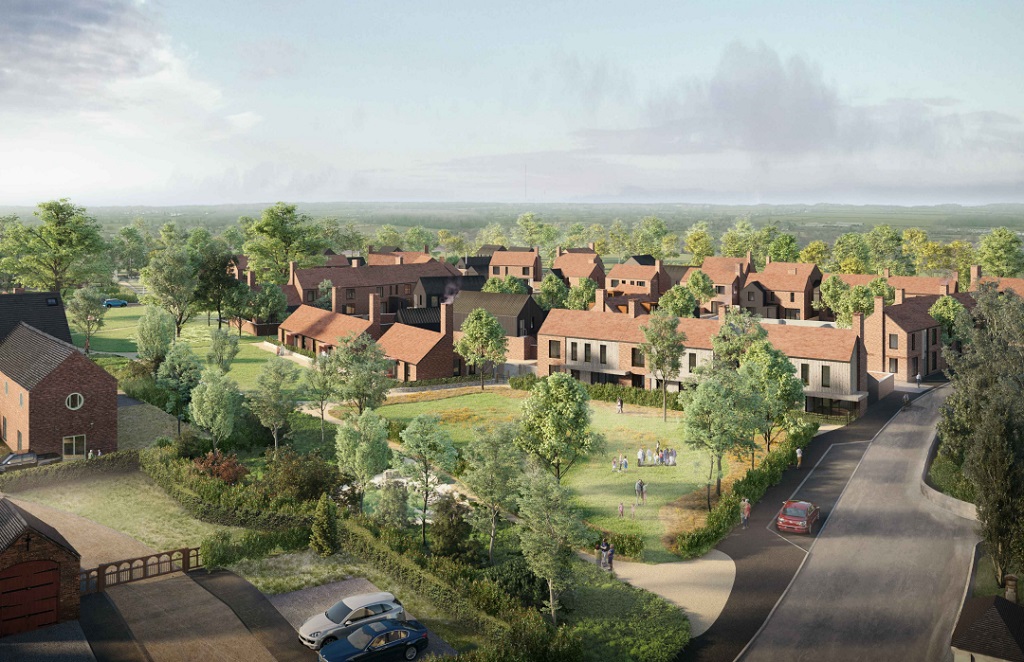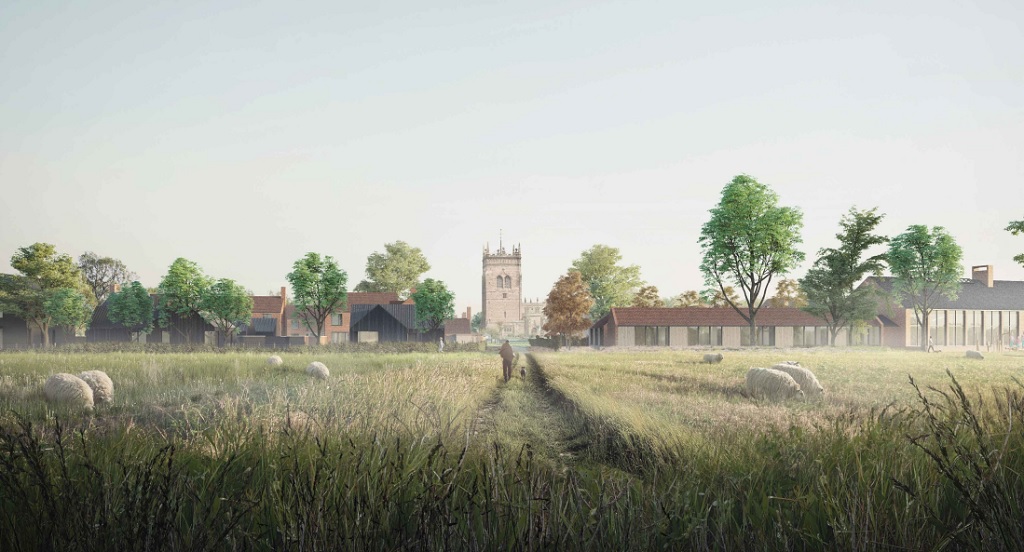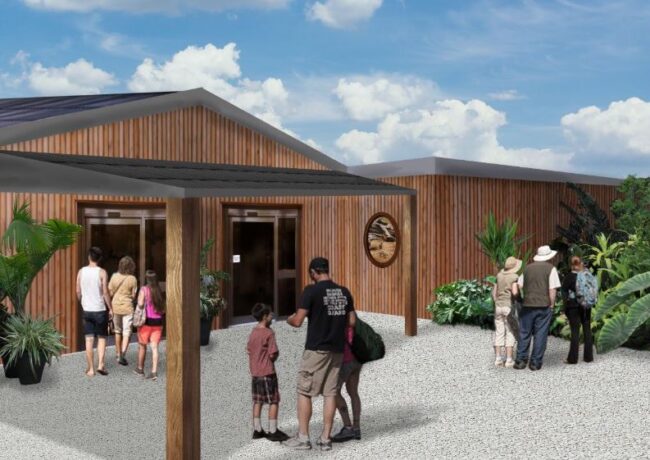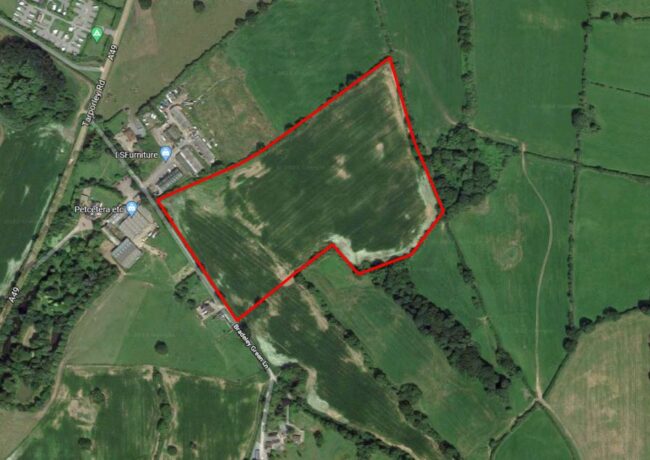Plan for 53 homes and pub in Acton refused
Cheshire East Council’s planning committee blocked the scheme by the Dorfold Estate this morning, with nine councillors voting to refuse and one abstaining.
The council’s reason for refusal was based on the recommendation of both its planning and landscape officers, as well as objections from residents on the grounds that the development would cause visual harm to the village of Acton, its conservation area, and the open countryside on which it would be built on.
In a council report, the landscape officer stated that the plans would “present an unacceptable change” to the village.
“The radical change from what is, at present, a typical edge of village rural countryside character into a housing estate would present an unacceptable change in this particular, sensitive village setting, especially in this location so close to very sensitive heritage assets,” they wrote.
Designed by Brook Murray Architects and measuring nearly 12 acres, the scheme would feature 53 dwellings, comprised of eight two-bedroom, 33 three-bedroom, 11 four-bedroom, and one five-bedroom properties.
Drawn up by Turnberry Planning, the plans were originally submitted in 2019 by Charles Roundell, manager of the Dorfold Estate and Dorfold Hall – a grade one-listed Jacobean-style manor house that sits at the intended development’s boundaries.
The Dorfold Estate states that this mix of housing sizes would provide opportunities for those downsizing or boosting their stock profile, as well as first-time buyers – with 30% of the properties acting as affordable housing, in line with Cheshire East Local Plan Strategy.
Despite this, the planning officer criticised the lack of one-bedroom properties.
Cheshire East Council currently maintains a five-year housing land supply and is meeting and exceeding its affordable housing targets.

The plans for 53 homes, a pub, and a village green were rejected by the council. Credit: Conica Studio and Brooks Murray Architects
In the planning statement, the Dorfold Estate put forward an argument of 21 economic, environmental and social benefits that would stem from the development.
Among them was the creation of four acres of public open space including a village green, and 126 parking spaces, including 17 visitor spaces that could supplement St. Mary’s Church.
It would also provide improvements to nearby roads and pedestrian paths – creating a link road between Monks Lane and Chester Road where the plan for the development lies.
The influx of new residents would also have improved the viability of Acton CE Primary School by increasing demand for places, according to the application.
The application also contained plans for a pub, measuring 4,330 sq ft, which would have provided an amenity that Acton has not had since 2016.
The pub would also have featured nine ancillary bedrooms, acting as an inn, and providing supplementary accommodation to events at Dolford Hall.
Events such as weddings are vital to the hall has become no longer sustainable and with the estate posting annual losses since the 1990s, the planning application said.
The plans would have increased investment to the hall via tourism and event usage and help retain its status as a historical entity, a prospect supported by Historic England, who stated: “Historic England welcomes and supports the Roundells’ desire to best equip the Dorfold Estate for future resilience.
“Historically an estate such as Dorfold would have largely been supported by its land, through agriculture and the letting of property.
“We recognise the increasing difficulty of funding historic entities in this manner and understand the need to diversify and adapt in order to provide the necessary income streams required to maintain these significant historic buildings, and their grounds.”
The project team included transport assessor DTPC, flood risk and drainage expert Curtins, landscape architect EDP, ecologist Peak Ecology, noise and acoustic consultant Sandy Brown, air quality assessor Gair Consulting, heritage specialist Worlledge Associates, and arboriculturalist Godwins Arboricultural.
During its initial round of consideration, the council received 70 letters of objection, as opposed to 38 supporting the development.
If you would like to learn more about this scheme, search application reference number 19/5211N on Cheshire East Council’s planning portal.





Noting the economic arguments about maintaining the estate (a designated heritage asset), why did they not pursue an enabling development argument similar to that currently going through planning at Daresbury Hall?
By Anonymous
Misleading headline – Acton is nowhere near a designated Green Belt.
By Anonymous
Hi Anonymous – you are correct and we have adjusted the headline accordingly. Apologies for the mistake.
By Julia Hatmaker
I wish more councils had the decency to reject overdevelopment
By Gilly
Not over here, please. Take your investment in the fabric of our village elsewhere.
By Anonymous